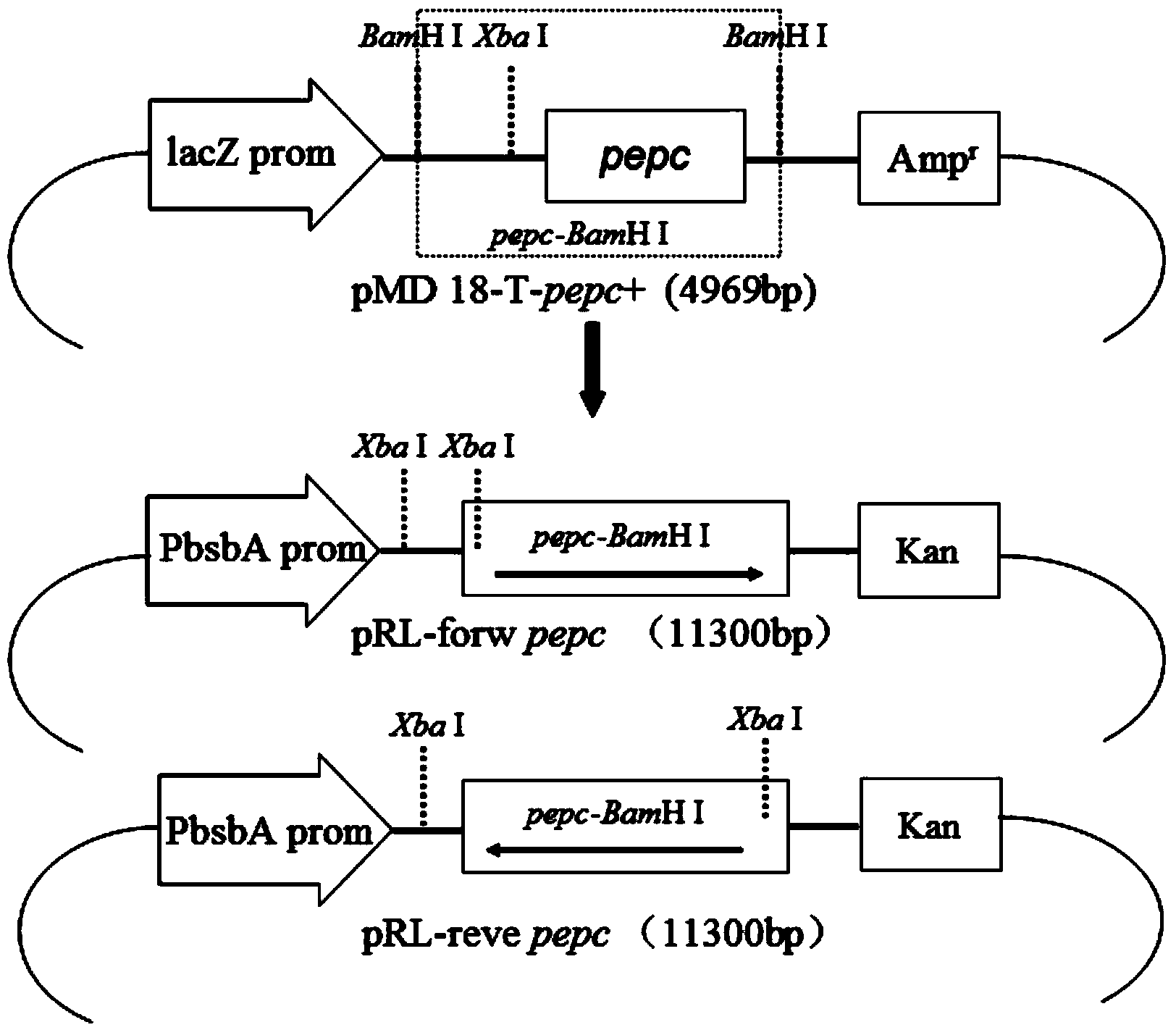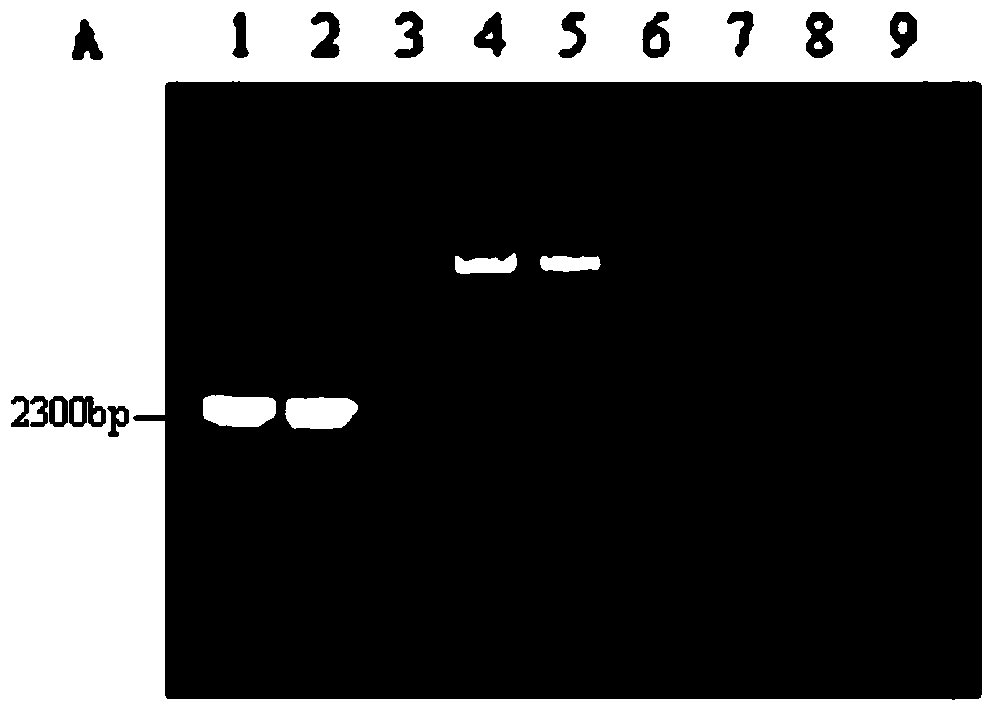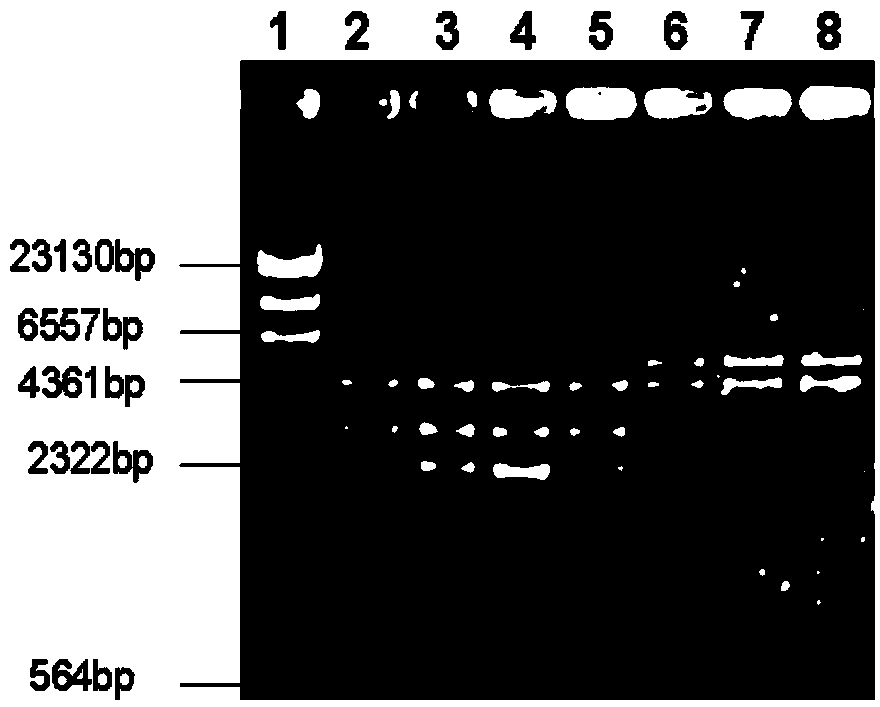Protonema engineering blue algae with high fat content and high essential fatty acid content and constructed by adopting reverse vector method
A technology for essential fatty acids and filaments, which is applied in the fields of biotechnology and microalgae energy, can solve the problem of not being able to ultimately improve lipid yield, etc., and achieve the effects of high photosynthesis efficiency, high lipid yield, and pollution avoidance.
- Summary
- Abstract
- Description
- Claims
- Application Information
AI Technical Summary
Problems solved by technology
Method used
Image
Examples
Embodiment 1
[0039] Example 1 Fishing out the target gene and constructing the vector
[0040] (1) Determine the pepc gene sequence, which can be found in GenBank, and its number is NP_488901; design primers according to this sequence, and use PCR technology to catch the pepc gene; the primer sequence is:
[0041] Upstream 5'-GATGGGCAAGCCACAAAAGACC-3', such as SEQ ID No.2;
[0042] Downstream 5'-AGGATCCGCGGGACGAGAAC-3', such as SEQ ID No.3;
[0043] Anabaena 7120 was purely cultured, and genomic DNA was extracted from it as a template for pepc gene, and the target gene was obtained by using PCR technology and the above primers, the length of which was about 2300bp, such as the sequence of SEQ ID No.1.
[0044] (2) Select the pRL-489 plasmid and connect it with the target gene to construct two kinds of shuttle expression vectors, forward and reverse. The forward vector is constructed according to the operation of gene overexpression vector construction in conventional genetic engineering, ...
Embodiment 2
[0052] Example 2 Transformation of cyanobacteria and screening of transformants.
[0053] This example includes:
[0054] (1) Purify and preserve the desired wild-type strain of cyanobacteria; (2) Determine the growth curve of the selected cyanobacteria, and cultivate the cyanobacteria to the mid-logarithmic growth stage, and use them as materials for the transformation of the three-parent conjugation transfer method; (3) Cultivate the Escherichia coli mutant carrying the above-mentioned shuttle expression vector to the mid-logarithmic growth phase (cultivation for 4 to 5 hours) for triparental conjugation transfer; ) of Escherichia coli was cultured to the mid-logarithmic growth phase (cultivation for about 4 to 5 hours), and used to transform cyanobacteria by the three-parent conjugative transfer method; (5) transform the cyanobacteria with the vector with pepc by the three-parent conjugative transfer method; (6) use The medium (solution) containing antibiotics was used to ...
Embodiment 3
[0059] Example 3 Cultivation and detection of transgenic engineered cyanobacteria
[0060] This example includes (1) After about 3 weeks of antibiotic screening on the plate, the engineering algae with large algae colonies and dense chlorophyll can be selected, and 1 / 3 of the algae colonies are taken and suspended in a small tube with BG-11 culture medium. Sampling to identify whether it is Anabaena;
[0061] (2) After determining the algae species, take out the algae colony and culture it aseptically in a test tube containing about 2 mL of 25 μg / mL culture solution; after 1 week, transfer it to 30 mL of BG-11 culture solution containing 25-50 μg / mL antibiotic ( 50mL Erlenmeyer flask). After one week, it was expanded to a 250mL Erlenmeyer flask containing 150mL culture solution, and the concentration of antibiotics (kanamycin or thionovin) could be gradually increased from 25μg / mL through 50, 75, 100, 150, 200, 250 increased to 300μg / mL;
[0062] (3) After the antibiotic co...
PUM
 Login to View More
Login to View More Abstract
Description
Claims
Application Information
 Login to View More
Login to View More - R&D
- Intellectual Property
- Life Sciences
- Materials
- Tech Scout
- Unparalleled Data Quality
- Higher Quality Content
- 60% Fewer Hallucinations
Browse by: Latest US Patents, China's latest patents, Technical Efficacy Thesaurus, Application Domain, Technology Topic, Popular Technical Reports.
© 2025 PatSnap. All rights reserved.Legal|Privacy policy|Modern Slavery Act Transparency Statement|Sitemap|About US| Contact US: help@patsnap.com



